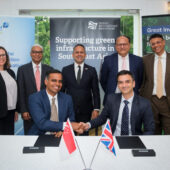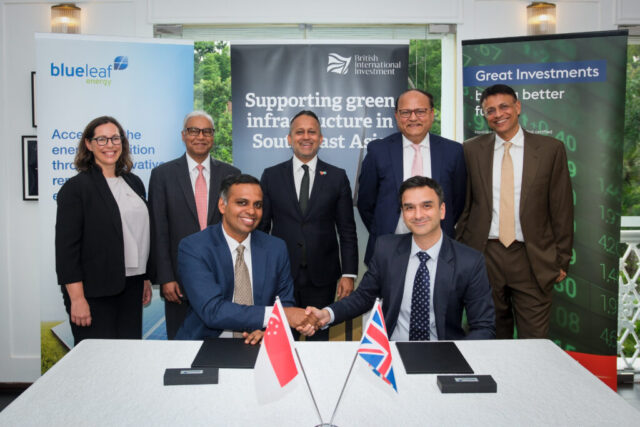Ahead of its annual forum in Berlin, Amit Bouri, CEO and co-founder of the Global Impact Investing Network (GIIN), talks to Maha Khan Phillips about the evolution of the impact investing industry, the vital role of institutional investors and catalytic capital, and what comes next.

Amit Bouri is the chief executive officer and co-founder of the GIIN, the global community of impact investors that aims to help build critical impact infrastructure, as well as to support education, activities and research across the impact investing industry. Co-founded by Bouri in 2009, the GIIN brings together investors, focuses on the development of standards and tools for measuring impact, and conducts research to strengthen the field. Last year, it’s market sizing report estimated that the global impact investing industry had assets under management of $1.571trn (€1.32trn), managed by 3,907 organisations.

Maha Khan Phillips (MKP): What are some of the biggest challenges and opportunities that the impact investing industry faces today?
Amit Bouri (AB): It’s an interesting time to have this conversation, because a year ago our world was in a very different place. The world has been swept up by a lot of change, with countries representing four billion people voting last year. One thing was clear: almost across the board, people wanted change. What I think that speaks to, in terms of impact investing, is that impact can address very specific problems, whether that is the need for more affordable housing, the transition to a sustainable food system, increased access to healthcare and education, and more. These are the things that the world is asking for and that impact investing can help deliver.
One thing we didn’t have in the early days of this market was the momentum and experience of large institutional investors and family offices.
These are also powerful things for the impact investing community to reckon with as we see a significant reduction in aid for emerging markets and a growing need for inclusive economic growth. One thing we didn’t have in the early days of this market was the momentum and experience of large institutional investors and family offices, but now they’re both leaning into impact in significant ways which will make a difference. So I think we are seeing this convergence of great need in the world, and the opportunity for impact investing to demonstrate that it can deliver on an increasingly global scale.
MKP: You’ve touched on emerging markets. What will it take to shift more capital towards emerging markets?
AB: On one hand, there is a growing ecosystem of companies in emerging markets that are focused on delivering impact, and intermediaries who have helped to build their own track record in identifying companies that can grow and scale. On the other hand, we have the current geopolitical environment, and investors are being more cautious about investing in markets where they don’t have as much experience. I think impact investors will continue to play a really important role in mobilising more capital towards emerging markets, and we need to keep thinking about the ways in which more catalytic capital can help crowd in more investments.
One thing that will be important is the domestic capital base, because they will be intentional about cultivating local investment, but I think it’s important that we also engage wealthy individuals, corporations and institutional investors. It’s about facilitating a kind of collective learning. As a global network we always think about peer exchange, and we believe peer learning is a really powerful driver of progress and growth. We want to engage more investors in learning about the opportunities in emerging markets and help identify ways in which different types of investors can address some of the real risks that are present.
MKP: How is GIIN engaging with investors, particularly institutional investors to unlock catalytic capital?
AB: Investors are increasingly seeing the need to invest for positive impact, and this stems in part from the need to deliver sustainable returns over the long run. Sustainable returns require sustainable societies and a sustainable planet. I think that investors are recognising that their impact strategies can help them put that capital to work.
Over the last decade and a half, we’ve built great measurement tools that are getting better all the time and support investors in deploying capital for impact. We work directly with investors to understand how impact fits into their institutional context and we have a training initiative that’s been rolling out all over the globe to help investors build their capability in this area. But in addition to good tools we also need good transparency, which is why IRIS+ is being used by many large institutional investors as the basis on which they build their impact measurement and management systems.
MKP: What about the role of catalytic capital?
AB: From the GIIN’s perspective we need to make sure that impact investing is reaching markets that have traditionally been harder to reach, and that requires flexible capital. This is very uncommon for large institutions [to be able to provide] because of internal policies or regulation, so catalytic capital plays an important role in driving more innovation. That’s where we see philanthropic foundations, some government-backed entities, as well as family offices play a critical role to push the frontier of impact further and further. The GIIN’s role is also to look at how we can support the development of that flexible, innovative impact capital.
We need to make sure that impact investing is reaching markets that have traditionally been harder to reach, and that requires flexible capital.
MKP: When we look at the impact investing industry five years from now, where do you think we’ll be?
AB: I think we’re going through a period of deeper transformation. Investors and other stakeholders are orientating around the future world that we want to build. This process requires a lot of soul searching and a look at fundamental priorities. I think we’re going to see a broader restructuring of the role that we want the private sector to play in shaping our society and our planet. My hope is that in five years, all investors will be orientated around this, trying to use impact investing as a key tool in putting capital to work.





